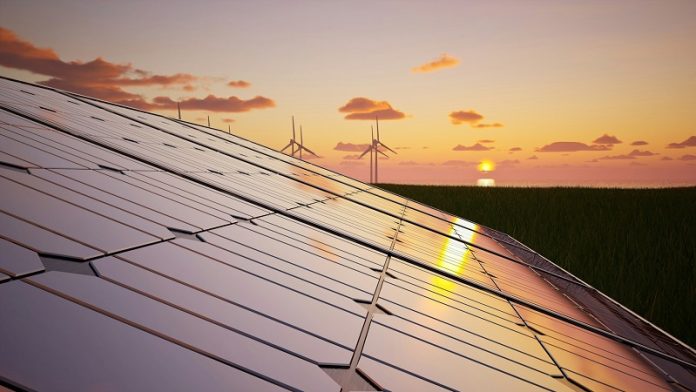
Researchers at North Carolina State University have developed a way to improve organic solar cells by addressing a critical issue: energy loss at the interfaces where light converts to electricity.
Organic solar cells, made from carbon-based polymers, have the potential to be low-cost, flexible, and even semi-transparent, making them ideal for various applications, such as lightweight solar panels or transparent solar windows.
But so far, they haven’t been as efficient as other solar cell types, like silicon or perovskite cells, in turning sunlight into electricity.
Organic solar cells work by combining two main materials: a polymer (known as the “donor”) and a small molecule (called the “acceptor”).
The polymer collects electrons from sunlight, but these electrons need to be passed on to the acceptor material to create an electric current.
When these donor and acceptor materials meet, they form an “interface,” and past research has shown that energy is often lost at these interfaces, limiting the cell’s efficiency.
To better understand this, the research team, led by materials science professor Aram Amassian and physics professor Daniel Dougherty, developed a new technique using scanning-probe microscopy.
This method allowed them to look closely at the topography and energy properties at the interface between the donor and acceptor materials, like energy gradients and how well-ordered or disordered the molecules are.
One of the study’s key findings was that the type of interface between the donor and acceptor plays a big role in energy loss. Specifically, they found that a sharp donor-acceptor interface in high-performance organic solar cells, like PM6, is a major factor in voltage loss.
By mapping these interfaces and comparing them to standard performance measurements, the team could see which parts of the interface contributed the most to energy loss.
In their analysis, the team found that energy loss at the interface was due to a combination of two factors: the energy differential between the donor and acceptor materials and the degree of molecular disorder at the interface. Their results show that both factors need to be managed to minimize energy loss effectively.
Once the researchers identified the types of interfaces that cause voltage loss, they explored ways to fix it. By changing how the donor and acceptor materials are blended, they were able to reduce voltage losses significantly. Their findings suggest that using donor-acceptor materials with minimal energy offsets can reduce energy loss and that fine-tuning the fabrication process can minimize molecular disorder at the interface.
The team’s work provides design guidelines that could help make organic solar cells more efficient in the future. By controlling energy offsets between materials and minimizing disorder at the interfaces, the team believes these solar cells can be much better at converting sunlight to electricity.
This new understanding could drive future advancements in organic solar cell technology, helping researchers and manufacturers create more efficient, cost-effective, and versatile solar energy solutions.



